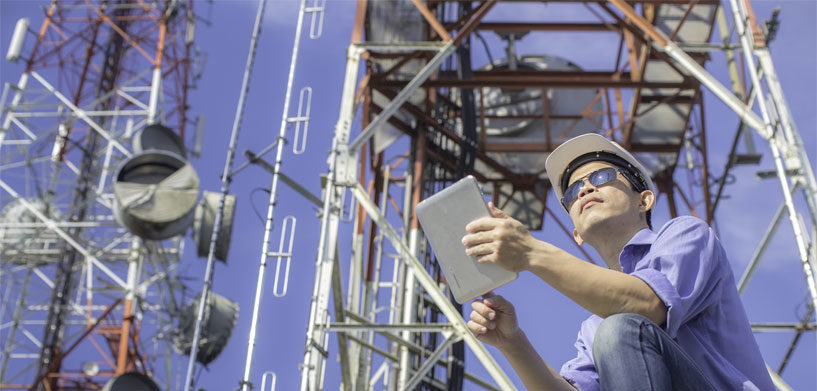Recently, our utilities and communications experts held a roundtable discussion regarding ERP integration. This wide-ranging conversation touched on everything from the ability of our G/Technology GIS suite to model network assets in the field to its compatibility with SAP management systems. Present at this discussion were David Kenney, vice president of implementation services; Don Lorente, services technical manager; Peter Krochenski, managing consultant; and Volker Elste, executive sales consultant.
In our previous blog, we focused on how ERP integrates with G/Technology and the benefits that offers customers. In this blog, our experts discuss GIS.
What do customers gain from G/Technology, our advanced utility GIS?
David Kenney: G/Technology manages and accurately models network assets as they are in the real world. And not just what and where those assets are, but how they function together in the operational network. This allows operators to tie their geospatial network model back into other business systems, so its data accuracy is critical to achieving that integration. G/Technology is the best solution for managing and modeling any operational network and its assets – be it telecom, electric, water, gas, wastewater, or transportation.
Second, the technology we built for integration was designed with SAP in mind. We have a very strong understanding of SAP, and that’s what we used to tie the system together. Because we understand how SAP functions, as well as the network modeling and asset management side, we were able to let customer needs define the integration as opposed to starting with a pre-defined integration – which could restrict what customers can do.
Volker Elste: It’s also worth noting there are different levels of integration. For example, some vendors have what they call “off-the-shelf connectors” to SAP. They’re able to display where the customer’s assets are on a map. And this is, essentially, what their geospatial enablement framework offers the market. But this isn’t providing utilities the functionality they need, particularly with regard to work processes. G/Technology is different. It’s one system driving assets into the other system.
What makes G/Technology better than conventional utility GIS solutions?
Volker Elste: Its model is functional. It’s not just mapping assets, it’s modelling how the network operates. And it’s transactional. Let’s say a large transformer is going to be replaced. The replacement is going to be driven through SAP to our network model in G/Technology. However, if I’m out on the road and I see poles that need attention, I can initiate that work through the GIS side. The fact that these transactions go back and forth, keeping the two systems in sync, is important because the SAP user doesn’t know that someone has seen dangerous poles that need replaced. This is a level of sophistication and business value that simple geospatial enablement frameworks can’t match.
Don Lorente: I agree. The transactional model of G/Technology enables a much tighter and more robust integration. Events occur on the G/Technology side that trigger transactions, updates, edits, and additions in SAP at a much more granular level. It’s not just bulk-sending data. It’s doing it on an individual feature basis and reflects asset life cycles and jobs as they transition from preliminary to design to in-service. G/Technology’s architecture also enables a tighter integration with SAP that enables it to do more than just display a map, it manages transactions.
Are there other reasons for utility companies to make the switch to G/Technology?
David Kenney: Right now, there is a need for utilities to assess their existing GIS. The industry is undergoing a massive transformation, and it’s important for utilities to assess the marketplace. Not just to know what each GIS system provides now, but also to understand where vendors are going, especially with strategic requirements like ERP integration. Hexagon already has ERP experience, with customers in production in Europe where integrated systems are more the norm. Our interface is here, our system is ready to go, and we’re not changing it because we identified the right model 20 years ago.
In closing, are there any other important aspects of integration to keep in mind?
Peter Krochenski: ERP integration requires utility to be thoughtful about what they’re doing and why they’re doing it. Large integrations require this level of consideration. When you’re integrating business systems, the owners of the systems must talk and collaborate to ensure they are thinking their way through this. Collaboration within your organization and with your vendors is crucial.
Volker Elste: Change is inevitable. But it’s good because it allows you to re-evaluate and improve. If you have an ERP and you’re looking at the GIS side, then why not be open to exploring other options? It’s the fiscally responsible thing to do. Besides, the rest of the industry has begun changing their data models and application suites to something closer to what we already offer. It’s worth your time to look at the solution that’s already proven and scalable.
To find out more about our G/Technology products, visit our website.















